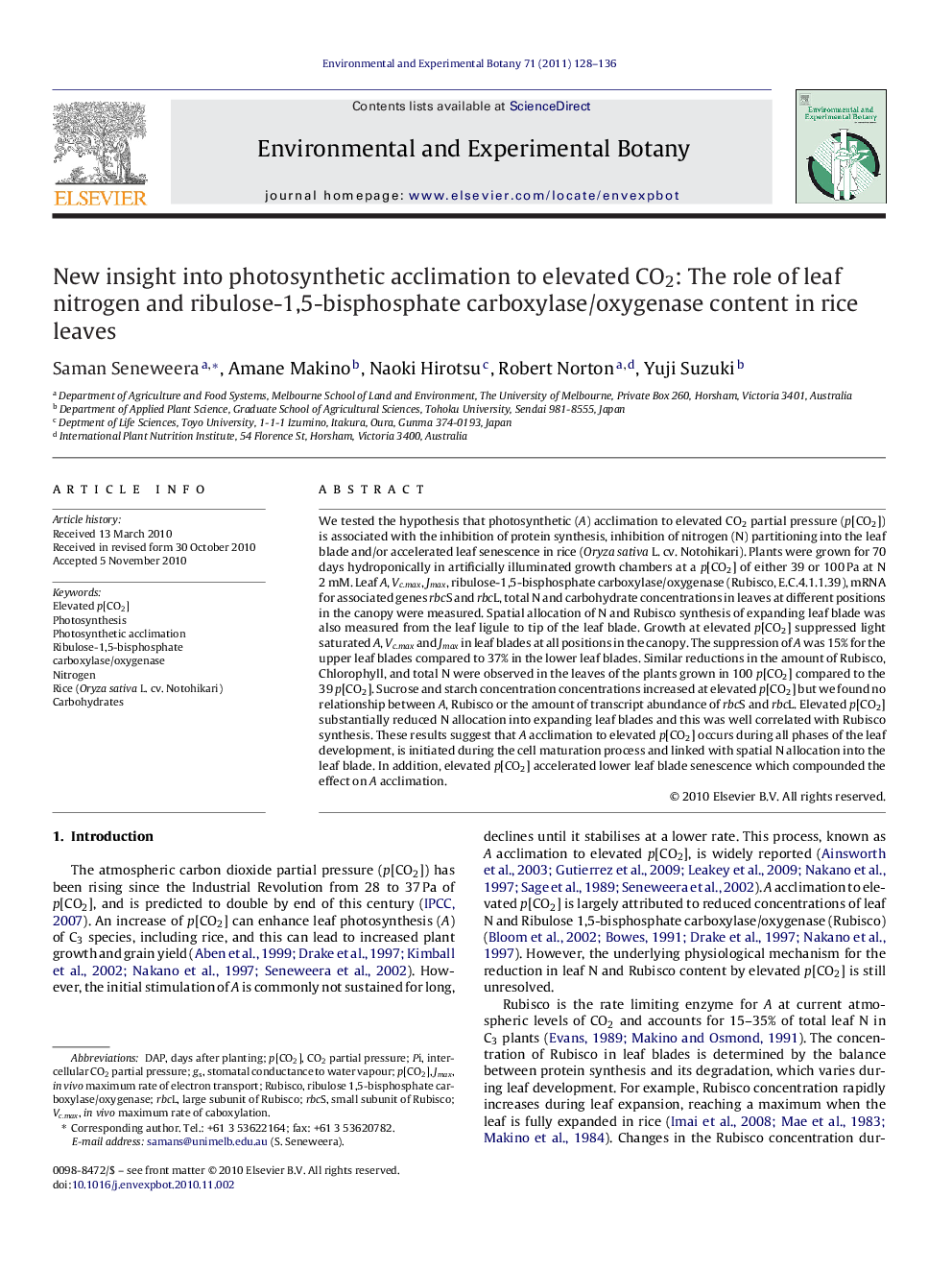| Article ID | Journal | Published Year | Pages | File Type |
|---|---|---|---|---|
| 6389040 | Environmental and Experimental Botany | 2011 | 9 Pages |
We tested the hypothesis that photosynthetic (A) acclimation to elevated CO2 partial pressure (p[CO2]) is associated with the inhibition of protein synthesis, inhibition of nitrogen (N) partitioning into the leaf blade and/or accelerated leaf senescence in rice (Oryza sativa L. cv. Notohikari). Plants were grown for 70 days hydroponically in artificially illuminated growth chambers at a p[CO2] of either 39 or 100Â Pa at N 2Â mM. Leaf A, Vc.max, Jmax, ribulose-1,5-bisphosphate carboxylase/oxygenase (Rubisco, E.C.4.1.1.39), mRNA for associated genes rbcS and rbcL, total N and carbohydrate concentrations in leaves at different positions in the canopy were measured. Spatial allocation of N and Rubisco synthesis of expanding leaf blade was also measured from the leaf ligule to tip of the leaf blade. Growth at elevated p[CO2] suppressed light saturated A, Vc.max and Jmax in leaf blades at all positions in the canopy. The suppression of A was 15% for the upper leaf blades compared to 37% in the lower leaf blades. Similar reductions in the amount of Rubisco, Chlorophyll, and total N were observed in the leaves of the plants grown in 100 p[CO2] compared to the 39 p[CO2]. Sucrose and starch concentration concentrations increased at elevated p[CO2] but we found no relationship between A, Rubisco or the amount of transcript abundance of rbcS and rbcL. Elevated p[CO2] substantially reduced N allocation into expanding leaf blades and this was well correlated with Rubisco synthesis. These results suggest that A acclimation to elevated p[CO2] occurs during all phases of the leaf development, is initiated during the cell maturation process and linked with spatial N allocation into the leaf blade. In addition, elevated p[CO2] accelerated lower leaf blade senescence which compounded the effect on A acclimation.
Research highlightsⶠPhotosynthetic rates declines when plant expose to elevated CO2 for longer period (Acclimation). ⶠThe underlying physiological and molecular mechanism of these responses is not well understood. ⶠWhole canopy acclimated to elevated and linked with reduced nitrogen partitioning to expanding leaf blade. ⶠSpatial nitrogen deposition and synthesis Rubisco is well correlated and closely associated with photosynthetic acclimation.
